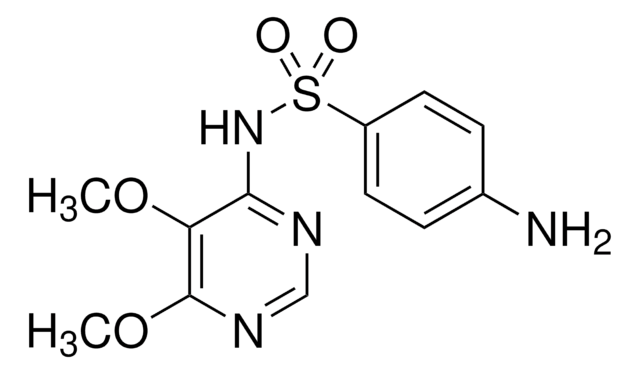S9882
Sulfachloropyridazine
Sinónimos:
4-Amino-N-(6-chloro-3-pyridazinyl)benzenesulfonamide, N1-(6-Chloro-3-pyridazinyl)sulfanilamide
About This Item
Productos recomendados
form
powder
color
off-white to light yellow
solubility
0.5 M NaOH: soluble 50 mg/mL
antibiotic activity spectrum
Gram-negative bacteria
Gram-positive bacteria
mycoplasma
mode of action
DNA synthesis | interferes
SMILES string
Nc1ccc(cc1)S(=O)(=O)Nc2ccc(Cl)nn2
InChI
1S/C10H9ClN4O2S/c11-9-5-6-10(14-13-9)15-18(16,17)8-3-1-7(12)2-4-8/h1-6H,12H2,(H,14,15)
InChI key
XOXHILFPRYWFOD-UHFFFAOYSA-N
¿Está buscando productos similares? Visita Guía de comparación de productos
Application
Biochem/physiol Actions
Other Notes
Certificados de análisis (COA)
Busque Certificados de análisis (COA) introduciendo el número de lote del producto. Los números de lote se encuentran en la etiqueta del producto después de las palabras «Lot» o «Batch»
¿Ya tiene este producto?
Encuentre la documentación para los productos que ha comprado recientemente en la Biblioteca de documentos.
Los clientes también vieron
Nuestro equipo de científicos tiene experiencia en todas las áreas de investigación: Ciencias de la vida, Ciencia de los materiales, Síntesis química, Cromatografía, Analítica y muchas otras.
Póngase en contacto con el Servicio técnico









